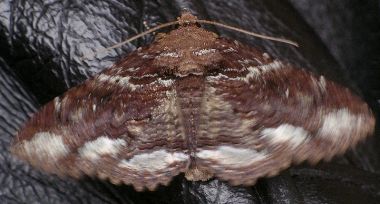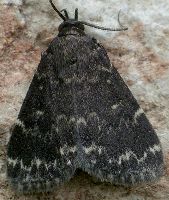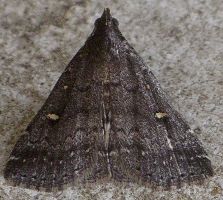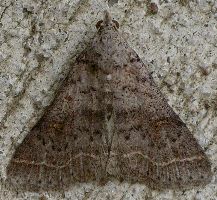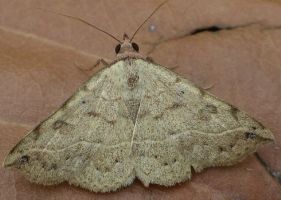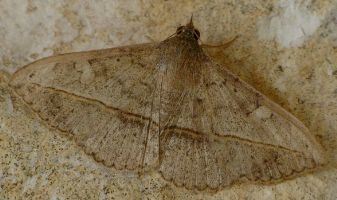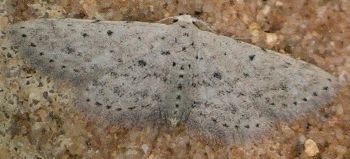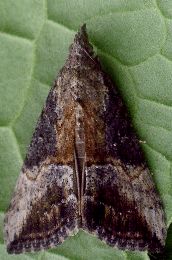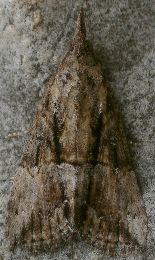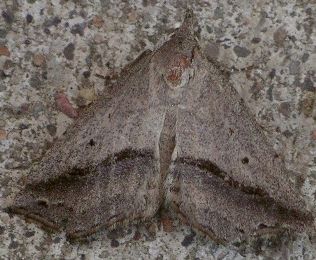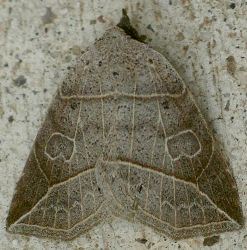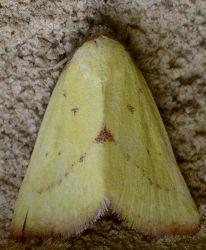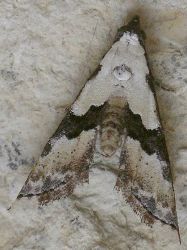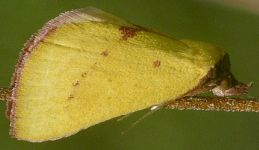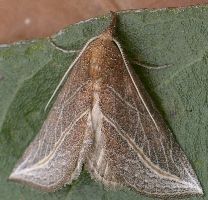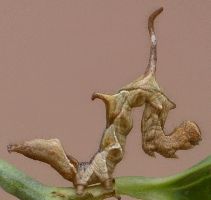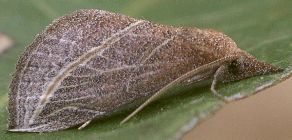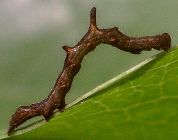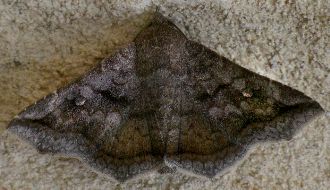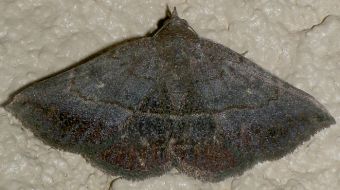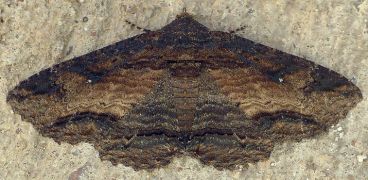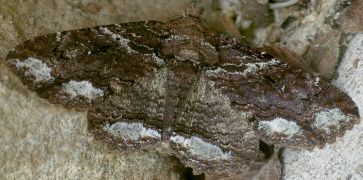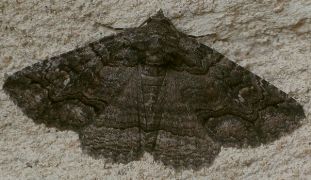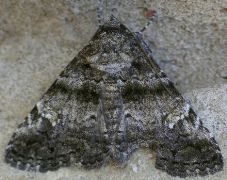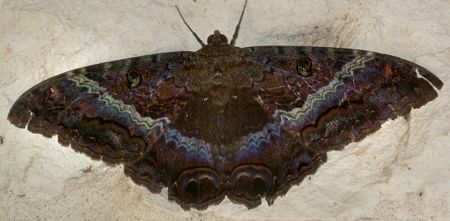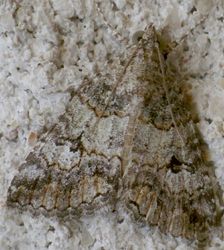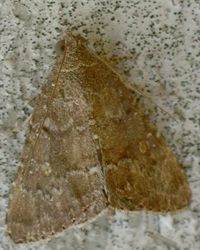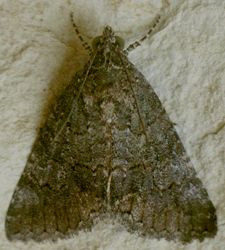
| Noctuidae ~ Owlet Moths |
page 1 ![]() page 2
page 2 ![]() page 3
page 3 ![]() page 4
page 4 ![]() page 5
page 5 ![]() page 6
page 6 ![]() page 7
page 7 ![]() page 8
page 8
|
For just about every other group of insects, treating each family separately has resulted in manageable pages. The noctuids, or owlet moths, prove to be the exception, however. There are close to 2,000 species of moths in our area, and over 1/4 of those are in the family Noctuidae. Since none of these moths are really tiny, they are more likely to be seen. They are mostly nocturnal, and this fact actually makes them easier to photograph; if I do happen to find them, they are far less likely than many insects to fly off. Stationary subjects are my favorite kind. Even though I've not come close to seeing all our noctuids, I have encountered a fair number, both as caterpillars and adults, hence the large number of pages required for this family.
If you know what you are looking for, here are a few quick links to highlights and major groups within this family: That moths are attracted to lights is one of the few facts about insects that just about EVERYONE knows. While I don't regularly put out special lights (black lights and mercury vapor bulbs work very well), I do make a habit of checking areas in the morning where I know security lights have been on during the night. One of the best places for this is at the Lady Bird Johnson Wildflower Center, where the natural rock walls, archways, tunnels, and overhangs provide protection. At times, though, lights around parking lots, motels, shopping centers, our porch, and even street lights might attract moths. It goes without saying that a family as big as this one will have a good deal of diversity. There are so many subfamilies that I find it hard to keep track of them, but I will try to group subfamilies together on these pages. A recent development in taxonomy has resulted in making this family even bigger: Arctiidae (the tiger and lichen moths) has been shifted to a subfamily of Noctuidae and is now Arctiinae. For convenience, I've left the arctiids in their own family. I may, when I run out of other things to do, move them into this family.
Many moths do not have common names. In some other groups, such as butterflies, the common names are a helpful clue in identification when a taxonomic designation has been changed, such as the genus. Because moths are less studied as well as more numerous than butterflies, taxonomic changes are plentiful as researchers try to sort out relationships between species. One very helpful tool, though, in the identification arsenal, is the list of Hodges numbers. Hodges was a researcher who assigned every species of moth a number back in the 1980s. While names change and relationships fluctuate, the numbers stick with a species, helping place it close to its relatives and letting us track its designation evolution. I will include the numbers along with the Latin names simply because they are a handy tool in dealing with this big family. When I only know the genus, the Hodges number will be the first of that group followed by an "x" so that it can at least be placed close to where it belongs. One thing that makes some noctuids difficult to identify is that they look very much like members of the large family Geometridae. The caterpillars would never be mistaken, although some noctuids are also "loopers" (the number of prolegs at the rear is different), but the look of some adults can be very confusing, making identification a nightmare.
As is illustrated by the above photos, it can be very difficult to tell that these moths are noctuids instead of geometrids. They are the same medium size (they are 12-15 mm long), and spread their wings in the triangular look of many moths in that family. They are not encountered very often, and there are not all that many different species, so one can become familiar with their appearance. I've only seen the Glossy Black Idia (Idia lubricalis) twice, once in July and once in Sept. While this specimen was dark charcoal colored, the other was a chocolate brown. The Smoky Tetanolita (Tetanolita mynesalis) and the Bent-winged Owlet (Bleptina caradrinalis) are a little more common and show up between Feb. and July.
The Variable Tropic (Hemeroplanis scopulepes) and the Velvetbean Caterpillar Moth (Anticarsia gemmatalis) are also not typical noctuids in shape and posture. They hold their wings out wide, more like geometrids. The Variable Tropic, with a wingspan of about 25 mm, shows up occasionally through the warm months, but I've only seen the Velvetbean Caterpillar Moth in Oct. Its wingspan is usually around 18 mm.
Perhaps the most family-challenged moth is the Stippled Sigela (Sigela penumbrata). Not only is this a small moth for a noctuid, with a wingspan of only 12 mm, but it has the same spread-wing posture as many geometrids. The white, fringed wings also give the impression of the wrong family. Needless to say, this one is worth learning just so a lot of time is not wasted looking it up in the wrong category. The ridge with black spots down the length of the body is a very good clue to identity. It is not an uncommon moth and can be found during the spring. Some noctuids have wing markings so variable that shape alone is practically the best way to identify them. The Green Cloverworm Moth (Hypena scabra) is one such example. It is an arrow-shaped moth, very common, that shows up through much of the year, although it is usually absent through the hot summer months. Besides its shape, notice that the general pattern looks the same whether the exact markings are dark or pale. They usually have a very long point to their head, but sometimes the labial palps that form that point get broken off. Size is about 15 mm long. While the adults are commonplace, the larvae (Green Cloverworms) are not easy to find or identify.
Another triangular moth reminiscent of geometrids is the Lost Owlet (Ledaea perditalis). The prominent dark lines on the wings could be confused with moths in the Digrammia genus of that family. I've only encountered this one once, in late May; it is about 15 mm long.
There are more very nifty looking related moths. The Thin-lined Owlet (Isogona tenuis) does an admirable job of looking like a dead leaf. If you can find one (look around lights), it will usually not try to fly away, simply relying on its camouflage for protection. Rather common, I find these 15 mm long moths during March and April. A beautiful small yellow moth, about 10 mm long, with no common name, Phytometra orgiae seems to have a fairly long flight season. I've found individuals as early as February and as late as July. Not only do they come to lights, but their bright color can be seen in fields, especially if you flush one out and it flies.
One other clue to the identity of some of these moths is the shape of the face. When viewed from the side, the head appears to have a little upturned snub nose. It's not really a nose, of course, but the labial palps which are projections on the front of the head. For sheer modernistic design, the Curve-lined Owlet (Phyprosopus callitrichoides) is one of my favorites. It is not all that common, with adults showing up in March. The sleek look and long pointy head cannot be confused with anything else, while the highly unusual larvae, which feed on Cat-brier (Smilax bona-nox) are something straight out of a Dr. Seuss book. I've only found the larvae during June.
There are some very bat-like noctuids. These dark insects hold their wings out in a cloak-like fashion, making them somewhat resemble geometrid moths. There are two species of Lesmone in our area, one of which is called the Owlet Moth (Lesmone hinna). Since the noctuids are commonly called the owlet moths, that would seem to make this species the archetype of the entire family. The other species is the Detracted Owlet (Lesmone detrahens). Perhaps it is distressed that it didn't get the place of honor that its sibling species did. The Owlet is about 25 mm wide, while the Detracted Owlet is about 30 mm. Both are not common and I've seen them only in the autumn, attracted to lights.
Another similar moth is the Lunate Zale (Zale lunata). This large (50 mm wingspan) moth seems to prefer cooler weather. I've seen it in February and also in the fall. The wings are marked with many intricate lines and are rather variable, especially in the amount of white.
I have only found a couple of Lunate Zale caterpillars, probably owing to their excellent camouflage. They tend to cling to branches and look very much like another twig, complete with vague mottled markings. Good ID features are their pointy butt, and an orange band between segments towards their front that only shows when they are disturbed and curl their head down so that it stretches out and is visible.
The Bold-based Zale (Zale lunifera) seems to be much less common than its similar sibling species, the Lunate Zale. I've found just one, in September. It has a wingspan of about 40 mm, slightly smaller than the Lunate Zale. A related species, the Live Oak Metria (Metria amella), is not particularly common. I've seen it only in the spring. It looks deceptively like a couple of rather common geometrid moths, the Woolly Gray and the Half-wing. The problem here is that those two species look like noctuids! The specimen shown here has a chunk out of its wing, but it happened to be on a background that helps it to stand out. Other Live Oak Metrias that I've photographed are so camouflaged that they are nearly invisible. The next species is the stuff of legends. With a wingspan of about 150 mm, the Black Witch (Ascalapha odorata) is the widest of any moth in our area. It strays up from Mexico during the summer due to its strong flight. In fact, they are seen much farther north than central Texas. When I mentioned earlier that some noctuids are bat-like, this one is the closest to really looking like a bat. It's huge and dark. People also sometimes mistake it for a big black butterfly, because of its wing shape. I get more ID requests for this species than any other moth. Only females have the light-colored bands on their wings, although both genders have intricate patterns in various shades of dark brown.
The Black Witch is lured to lights and also to banana bait. People usually happen to see it at dusk or early in the morning, sometimes as it flaps about outside their lighted windows. There are various folk tales related to this moth, most having to do with death or other serious matters.
After addressing one of the most spectacular moths, it's a little hard to go back to focusing on small and rather ordinary ones, but there are a LOT of these. One pretty common species is Eubolina impartialis. This rather nondescript species is about 13 mm long, shows up from mid-summer into autumn, and is highly variable. |
page 1 ![]() page 2
page 2 ![]() page 3
page 3 ![]() page 4
page 4 ![]() page 5
page 5 ![]() page 6
page 6 ![]() page 7
page 7 ![]() page 8
page 8
![]()
